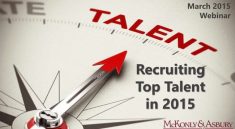simppler – Recruitment has always been a mix of art and intuition, but in the modern era, data has transformed hiring into a science of precision. The Future of Recruitment: Predictive Analytics and Employee Success explores how companies today no longer rely solely on gut instinct they rely on algorithms, behavior models, and historical data to identify who will thrive, not just survive, in their organizations. This shift is changing how HR professionals think about performance, engagement, and long-term success. Predictive analytics has become the secret weapon of forward-thinking companies that want to build smarter, more sustainable teams.
Table of Contents
The Rise of Predictive Analytics in Recruitment
How Predictive Hiring Models Work in Modern HR
From Data to Decisions: The Key Metrics Behind Smart Hiring
Benefits of Predictive Analytics for Employee Success
Real-World Examples of Predictive Hiring in Action
Challenges and Ethics in Predictive Recruitment
The Role of AI in Future Recruitment Strategies
Building a Data-Driven HR Culture
How Predictive Analytics Impacts Employee Retention
Why Predictive Analytics Will Define the Future of Work
FAQ About Predictive Analytics and Recruitment
The Rise of Predictive Analytics in Recruitment

In The Future of Recruitment: Predictive Analytics and Employee Success, predictive analytics has moved from buzzword to business necessity. Companies now collect enormous amounts of candidate data, from application behavior to psychometric test results. This information, when analyzed correctly, can forecast who is most likely to perform well, stay longer, and align with company culture.
-
Predictive analytics helps recruiters identify high-potential candidates before interviews even begin.
-
Algorithms can analyze success patterns from previous hires and replicate those traits in new applicants.
-
HR teams can make decisions faster, more accurately, and with fewer unconscious biases.
As technology matures, predictive analytics is no longer limited to big corporations startups and small businesses are also adopting these tools to gain a competitive edge in recruitment.
How Predictive Hiring Models Work in Modern HR
At the core of The Future of Recruitment: Predictive Analytics and Employee Success lies the predictive model—an analytical system that processes candidate data and produces probabilities of job success. These models rely on large datasets that include resume information, skills assessments, and performance outcomes of current employees.
-
Machine learning algorithms identify patterns that correlate with high performance and engagement.
-
Predictive models use regression analysis and clustering to rank candidates by likelihood of success.
-
Over time, the system becomes smarter, learning from every hiring decision to improve accuracy.
This analytical precision transforms recruitment from a reactive process into a proactive strategy, where hiring becomes an investment in long-term organizational growth.
From Data to Decisions: The Key Metrics Behind Smart Hiring
In The Future of Recruitment: Predictive Analytics and Employee Success, data isn’t just collected—it’s translated into actionable insights. HR leaders now track metrics that reveal not only who to hire, but why.
Some of the most impactful predictive metrics include:
-
Time-to-productivity: How long a new hire takes to reach full performance.
-
Engagement probability: The likelihood an employee will remain motivated and loyal.
-
Retention forecast: Predicting how long a candidate will stay with the organization.
-
Performance scoring: Evaluating skills, adaptability, and potential future growth.
By combining these insights, recruiters can craft more efficient hiring funnels and focus resources where they matter most—on people who are statistically more likely to succeed.
Benefits of Predictive Analytics for Employee Success
The benefits described in The Future of Recruitment: Predictive Analytics and Employee Success go far beyond faster hiring. Predictive analytics redefines what “the right hire” means in today’s economy.
-
Better cultural alignment leads to higher job satisfaction.
-
Data-driven hiring reduces turnover by identifying risk factors early.
-
HR departments can allocate budgets more effectively with performance forecasting.
-
Diversity increases when bias is replaced by objective data modeling.
The result is a workforce that’s not only productive but emotionally invested because the right people are placed in the right roles from the start.
Real-World Examples of Predictive Hiring in Action
Across industries, The Future of Recruitment: Predictive Analytics and Employee Success plays out in real time. Global corporations use predictive tools to solve their most pressing HR challenges.
-
IBM employs predictive algorithms to analyze workforce data and anticipate attrition before it happens.
-
Google uses data modeling to improve hiring efficiency and minimize unconscious bias in interviews.
-
Unilever implemented predictive assessments that shortened hiring cycles and improved retention rates globally.
These examples demonstrate how predictive hiring can become the cornerstone of modern HR strategies enhancing performance, reducing costs, and driving long-term engagement.
Challenges and Ethics in Predictive Recruitment
Despite its promise, The Future of Recruitment: Predictive Analytics and Employee Success raises critical ethical questions. Data is powerful, but power without responsibility can backfire.
-
Privacy concerns arise when personal and behavioral data are analyzed without explicit consent.
-
Overreliance on algorithms can unintentionally replicate historical bias in datasets.
-
Transparency is essential to ensure fair hiring decisions and trust between employer and candidate.
The most successful organizations balance analytics with empathy—using data as a tool, not as a replacement for human judgment.
The Role of AI in Future Recruitment Strategies
Artificial Intelligence amplifies everything discussed in The Future of Recruitment: Predictive Analytics and Employee Success. AI transforms predictive analytics into an adaptive, self-learning system capable of understanding nuance and context.
-
Natural language processing analyzes resumes beyond keywords, detecting tone, skill level, and creativity.
-
AI chatbots enhance candidate engagement while collecting valuable interaction data.
-
Automated systems rank candidates objectively, freeing recruiters to focus on cultural and emotional intelligence.
AI doesn’t replace recruiters—it empowers them, helping HR professionals make smarter, more empathetic decisions supported by precise data.
Building a Data-Driven HR Culture
Adopting predictive analytics requires more than software; it demands a mindset shift. The Future of Recruitment: Predictive Analytics and Employee Success shows that HR teams must evolve into data interpreters and storytellers.
-
Training HR professionals in analytics literacy ensures meaningful insights from data reports.
-
Cross-department collaboration integrates predictive insights with organizational goals.
-
Regular data audits maintain accuracy, fairness, and alignment with compliance standards.
When HR leaders embrace data as part of company culture, predictive analytics becomes not just a tool, but a philosophy for decision-making across the employee lifecycle.
How Predictive Analytics Impacts Employee Retention
One of the most profound lessons in The Future of Recruitment: Predictive Analytics and Employee Success is that predictive data doesn’t end at hiring—it continues to influence retention.
-
Early warning systems can detect disengagement before turnover occurs.
-
Predictive analytics aligns employee growth paths with organizational goals.
-
Personalized career development plans improve job satisfaction and loyalty.
By forecasting attrition risks, companies can act proactively, investing in support systems that prevent talent loss and strengthen engagement.
Why Predictive Analytics Will Define the Future of Work
Ultimately, The Future of Recruitment: Predictive Analytics and Employee Success points toward a new paradigm: one where hiring is not guesswork but guided intelligence. Companies that master predictive analytics will lead the next generation of innovation—not because they hire faster, but because they hire smarter.
-
Data-driven insights will become as vital as job interviews.
-
AI will integrate seamlessly with emotional intelligence to humanize data.
-
Employee success will be measurable, predictable, and scalable.
As the workforce becomes more digital and distributed, predictive analytics ensures one thing remains constant: the power of understanding people through data-driven empathy.
FAQ About Predictive Analytics and Recruitment
What is predictive analytics in recruitment?
Predictive analytics uses data models and AI to forecast which candidates are most likely to succeed and stay in a job, improving hiring quality and retention.
How does predictive hiring benefit companies?
It reduces turnover, minimizes hiring bias, enhances efficiency, and helps build a more engaged, productive workforce.
Can predictive analytics eliminate human bias?
It can significantly reduce bias by focusing on objective data, though human oversight remains essential to maintain fairness.
Is predictive hiring ethical?
Yes if implemented with transparency, consent, and data privacy measures. Ethics in predictive hiring depend on responsible data use.
Will predictive analytics replace recruiters?
No. It complements recruiters by automating repetitive tasks, allowing them to focus on strategy, culture, and human connection.



